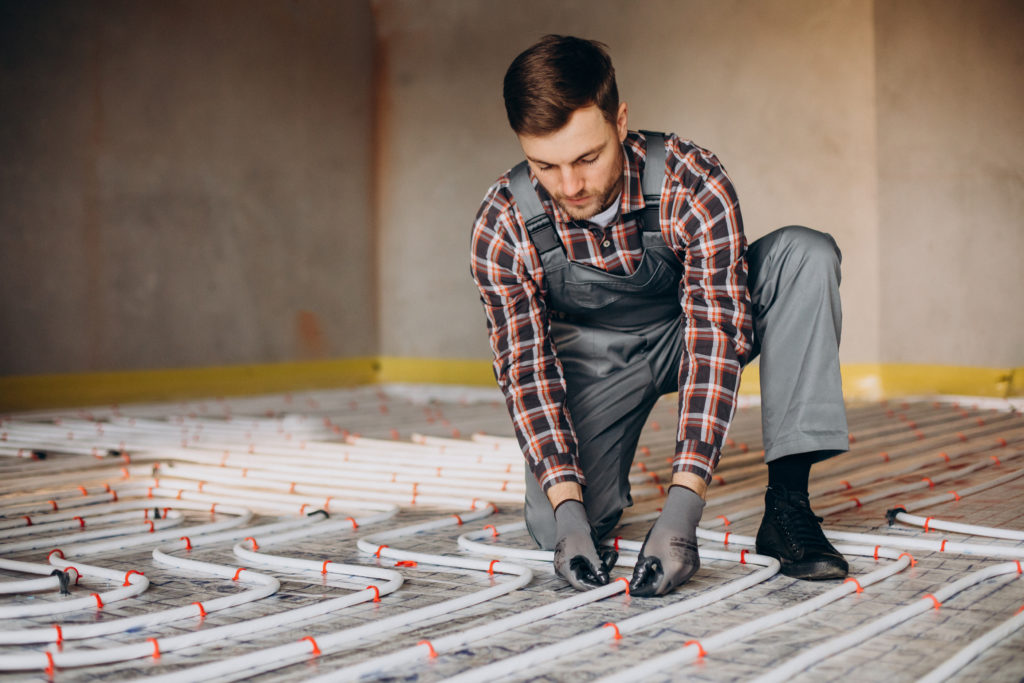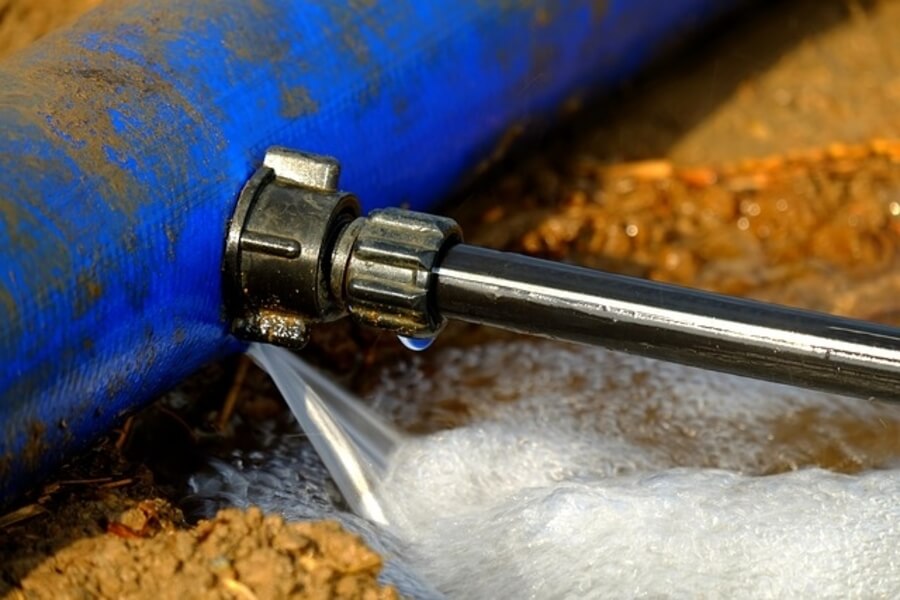
Underfloor heating leaks don’t happen often, but when they do, it can be quite a stressful situation. Leaving a leak, no matter how slight it is, can cause extensive damage to your floors and subfloor, which can be expensive to repair. So, what should you do if you have an underfloor heating leak? We’ll tell you everything you need to know to ensure your system stays in good working order for years to come.
How do underfloor heating leaks happen?
There are a few different ways an underfloor heating leak can occur. The most common cause is a faulty or damaged pipe, which can happen due to wear and tear over time. Other causes include incorrectly installed systems, poor maintenance, and even damage from construction work or landscaping. These are the most common problems that we see:
- Improper installation – if your system wasn’t installed correctly, it’s more likely to develop leaks. Make sure you use a qualified underfloor heating installer to avoid any issues.
- Wear and tear – over time, your pipes can become damaged from wear and tear. This is especially common in older homes. It’s unlikely you’ll notice damage as the system is under your floor, which is why you should schedule maintenance at least once a year. This will allow you (or your plumber) to spot issues before they get too bad.
- Very cold weather – in extremely cold weather, the water in your underfloor heating pipes can freeze. This causes the pipes to expand and can lead to leaks.
- Damage to pipes – damage to underfloor heating pipes can happen in a number of ways. One common cause is damage from construction work or landscaping. Another is if you accidentally hit the pipe while doing work in your home.
Signs of an underfloor heating leak

As an owner of underfloor heating, it’s vital that you know the signs that your system is damaged. Once you know what to look out for, diagnosing a pipe leak will be relatively simple. These are the most obvious signs that your underfloor heating system is leaking:
- Wet or damp spots on your floor – If you feel or see any damp spots, it’s worth checking for leaks. Dry the spot out and see if the dampness reoccurs to be sure that your system is at fault.
- Mould or mildew – if you notice a build up of mould or mildew, persistent dampness caused by a leaking pipe could be the cause.
- Cracks in your floor – Cracks in wooden flooring might be caused by moisture making the wood swell. If you notice any cracks in your floor, it’s important to check for leaks immediately.
- Uneven heating – if you notice that certain areas of your floor feel warmer, it could be because the hot water is leaking into that area.
- Unusually high water bills – If you notice a sudden spike in your water usage, it could be because of a leak.
Use this handy guide to find out if what you’re experiencing is an underfloor heating leak.
Fixing leaks
Once you’ve confirmed that there is a leak in your system, it’s time to take action. The first thing you should do is turn off your water supply. You can either turn off your water supply entirely or just shut off the supply to your heating system. Check with a professional if you don’t know what to do.
This video shows you the basics on how to turn off your water supply.
Next, you’ll need to identify the source of the leak. Once you know where the leak is coming from, you can either repair or replace the damaged pipe. If replacing, choose high-quality underfloor heating components to ensure they last for a long time. If you’re not sure how to do this, we recommend speaking to a professional underfloor heating fitter.
Preventing leaks
There are a few things you can do to prevent an underfloor heating leak from happening in the first place. Firstly, you should have your system serviced at least once a year. This will allow any potential problems to be identified and fixed before they cause damage.
Read More: The Ultimate Home Maintenance Guide
Secondly, make sure you use high-quality underfloor heating components. Cheap components are more likely to fail and cause leaks. Finally, be careful when doing work around your home. If you’re doing construction work or landscaping, make sure you avoid damaging the pipes.
If you follow these tips, you should be able to avoid most underfloor heating problems. However, if you do experience a leak, make sure you take action immediately to fix it. The sooner you identify and fix the problem, the less damage it will cause.
